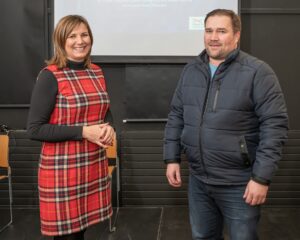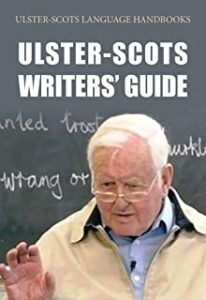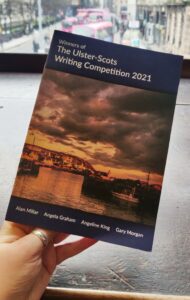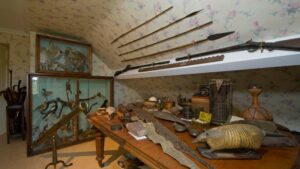Liam Logan interviewed me for a programme in his 8-part series on Ulster-Scots writing, ‘A MIGHTY MALLET’ made by Belfast cable channel Northern Visions (NVTV).
The series showcases the work of the Rhyming Weavers or Weaver Poets, working-class writers of the late 18th and early 19th century in the north of Ireland, who wrote in their vernacular and were influenced by Robert Burns. The programmes feature the work of James Orr, Samuel Thompson, Hugh Porter and John McKinley, David Herbison and Sarah Leech from Co Donegal, the only known female Irish weaver poet.
Liam Logan has added three contemporary writers in Ulster-Scots: Angeline King, Gary Morgan and myself.
The half-hour documentary on my work can be viewed here:
You can find the rest of the series at nvtv.co.uk Go to “on demand” and then “language”, “Ulster-Scots” .
Liam asked me how I came to write in Ulster-Scots. Both my grandparents on my father’s side came from communities with this speech and it has remained in my inner ear, as it were. I have had a lot of help in foregrounding it from people such as Liam and from the indispensable Ulster-Scots Grammar by Philip Robinson; The Hamely Tongue by the late James Fenton (both Ullans Press) and Ulster-Scots Writers’ Guide (Ulster-Scots Academy Press) and comments from the Ulster-Scots Language Society.
Work by Angeline, Gary and me is featured in the booklet produced as a follow-up to the Linen Hall LIbrary’s inaugural Ulster-Scots Writing Competition 2021 (supported by the Ulster-Scots Agency) in which we were all prize-winners.
Dr Pauline Holland, co-author of a biogrpahy of early eighteenth century poet, Sarah Leech, will also appear and Barbara Gray, singer and lyricist. Academics, Dr Ivan Herbison and Dr Frank Ferguson are on the roster too.

The filming was done at Sentry Hill near Larne in the house that was built in 1835 , improved in the 1880s, and owned by the McKinney family until 1996. William Fee McKinney (born 1832) collected farm implements and objects from rural life. The house’s interior and contents survive remarkably intact and give a good impression of a farm interior from the earlier twentieth century. It is run by Antrim and Newtownabbey Borough Council.
Liam interviewed me in a small room where many guns and weapons (are those assegais on the ceiling?) are on display, alongside stuffed birds and maybe an armadillo!


